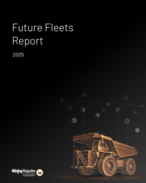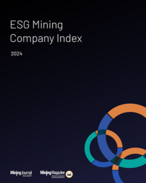This article is 16 years old. Images might not display.
Published in the April 2008 ResourceStocks
The reason for being so specific, and so confident, is that electricity has become scarce, and nothing drives prices higher, and faster, than scarcity – whether it’s real or imagined.
For reasons discussed further on in this special look at “the next big thing” the provision of electricity has been overlooked, or under-provided, in most of the world’s fast-growing economies.
The next few years will see a dash to catch up, with China and India leading a power station building boom that will, in turn, lead to a rush to buy fuel.
Sky high oil prices have been matched in recent weeks by record coal prices as shortages bite and countries which have not provided sufficient fuel for their needs discover supplies are not readily available.
If power and resource companies in the business of pumping oil or mining coal are the number one choice under the heading of “what’s next”, there is a second list which might be almost as surprising.
The second tier list is headed “back to the future”. It’s here that you find stocks which are getting a second wind thanks to a return of demand for base metals such as copper, nickel, zinc and aluminium.
A third category in “what’s next” is much easier to identify – precious metals such as gold, which is benefiting from the United States economic crisis and the declining value of the US dollar, and platinum, which is benefiting from the effects of a power shortage in South Africa.
Anyone in the market at the start of the resources boom in 2002 will remember that the key base metals of nickel and copper triggered the initial rush, with the rest of the metals sector following.
Careful followers of economic theory will recognise what appears to be happening in the resources sector. Rather than following the traditional boom-bust cycle, which has been the traditional route over the past 50 years, the world has entered a much longer wave of rising demand.
An economist by the name of Joseph Schumpeter identified the “economic wave” phenomena in the 1930s when developing his theory of short-, medium- and long-term waves of expansion and contraction.
In Schumpeter’s world, which included an 18-year stint lecturing at Harvard University in the US, a short-term wave lasted about four years – pretty much the boom-bust cycle seen in recent periods of resource sector investment (and disinvestment). A medium-term wave lasted about nine years, followed by 18- and 54-year waves.
It would be a brave man to say what wave we’re on today, but with China booming and with India to come it’s a reasonable bet that a 54-year event is underway – hence the back-to-the-future phenomena being observed in the base metal sector which many investors had written off as having done its best work.
If Schumpeter’s 54-year wave is the underlying force in the resources sector then we are indeed in for a period of sustained investment opportunity. In fact, most people would happily take a nine-year or an 18-year wave.
Last year’s big metal price and share price shake-out might easily be seen by a casual observer as the tail end of a Schumpeter four-year wave – and the current uptick as the force of a longer-term wave taking over, creating the feeling that we’re starting all over.
Supporting Schumpeter’s view of long-term waves is abundant evidence that China’s appetite for metals has not dimmed, and while there will be peaks and troughs the fundamental direction is still up – but only if the Chinese economic engine can get the power required to drive it.
That’s why a search for the next big thing leads investors back to the power question, more specifically who’s got it, and can they sell it for a profit to cash in on the looming, worldwide, energy shortage.
The oil price is one clue to the power shortage, but oil at $US100 a barrel is also an indication of “peak oil”, the theory fast becoming fact that world oil production has peaked.
The coal price is a second clue to the power shortage. Prices for both coking (steel making) and thermal coal (for producing electricity) have more than doubled over the past year.
Rising fuel prices, and a shortage of electrical generating capacity, underpin this “power at all costs” investment hypothesis, which is based loosely on the energy demands of China and India where power rationing is underway, and both government and industry are scrambling to plug gaps in national electricity grids.
Rapid growth in both big Asian countries is also stretching infrastructure, adding to demand for the base metals and iron ore. But, where poor roads and wonky bridges can be a transport nuisance, an absence of electricity is a show-stopper, and a few weeks ago the show almost did stop in China.
Heavy snow in January and February brought down power lines, cut coal production and curtailed output of key raw materials such as aluminium and steel.
Imports, which should have made up the domestic shortfall, also dried up.
Australian coal mines were hit by heavy rain forcing at least five producers to declare “force majeure” – invoking the so-called “act of God” clause in their sales contracts.
Vietnam chimed in with news that it’s going to slash coal exports from next year to ensure it has sufficient to meet its own requirements.
And in South Africa the lights were turned out when government power utility, Eskom, suddenly discovered that it didn’t have (a) enough coal in its stockpiles, or (b) didn’t have enough power generating capacity, or (c) had completely botched the management of its electricity demand.
Of the South African excuses the most believable is (c) – a management disaster, which had actually been 10 years in the making.
There is, if you’re an investor, a common thread running through all this and it comes back to where we started: power.
Translating this into a money-making opportunity is relatively easy – pick the best of the energy-linked stocks:
In oil, that means stocks such as Woodside, Santos, Australian Worldwide Exploration and Nexus.
In coal, it means Macarthur, Straits and Riversdale.
In uranium, it means Paladin, Toro and Marathon.
In alternatives and renewables, there are no clear leaders – but keep looking because there’s a political will to see them succeed.
As interesting as it might be...click here to read on.























